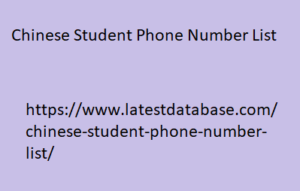|
|
Use rel=”canonical” Link Tag: Doing this can help you control which version of the page gets indexed and ranks for your targeted keywords. Set your Open Graph Meta Tags: This will let you optimize how your pages look when they’re shared on social media. Set your Viewport Meta Tag: This configures how your pages are scaled and displayed on different devices and platforms, which is important for user experience (more on that later). To get the most out of your SEO, don’t neglect this part of your on-page SEO checklist. The small tweaks here can add up to the big picture.
Well-crafted meta tags have the potential to increase click-through rates, boost your visibility on organic search and image search, enhance user experience, and also distribute link equity throughout your pages. All these contribute to how well your page Chinese Student Phone Number List ranks. 5. Internal Linking Internal linking spreads link equity throughout your site and can help search engines discover new pages. Always link back to pillar content, or other high-value content on your website. Benefits of Strategic Internal Linking: Navigation: They guide users through other relevant pages on your website. Page Authority: Anchor text can help to convey what the linked-to page is about, which can aid in ranking for those terms.

User Time on Site: Providing relevant links can keep users engaged on your site for longer periods. Good internal linking can significantly increase your engagement rates and contribute to building a robust site architecture. I have a separate post on how to build topical authority through internal linking you can check out. 6. User Experience (UX) User experience affects on-page SEO because search engines favor websites that provide a positive user experience. UX Factors to Consider in Your Website Design: Mobile-Friendliness: The site must perform well across all devices — but especially on mobile-view, as most users use Google through their phones. Ease of Use: The site should be navigable and logical in its layout. Navigation bars and other menus should be intuitive and prioritize the most important pages of your website.
|
|